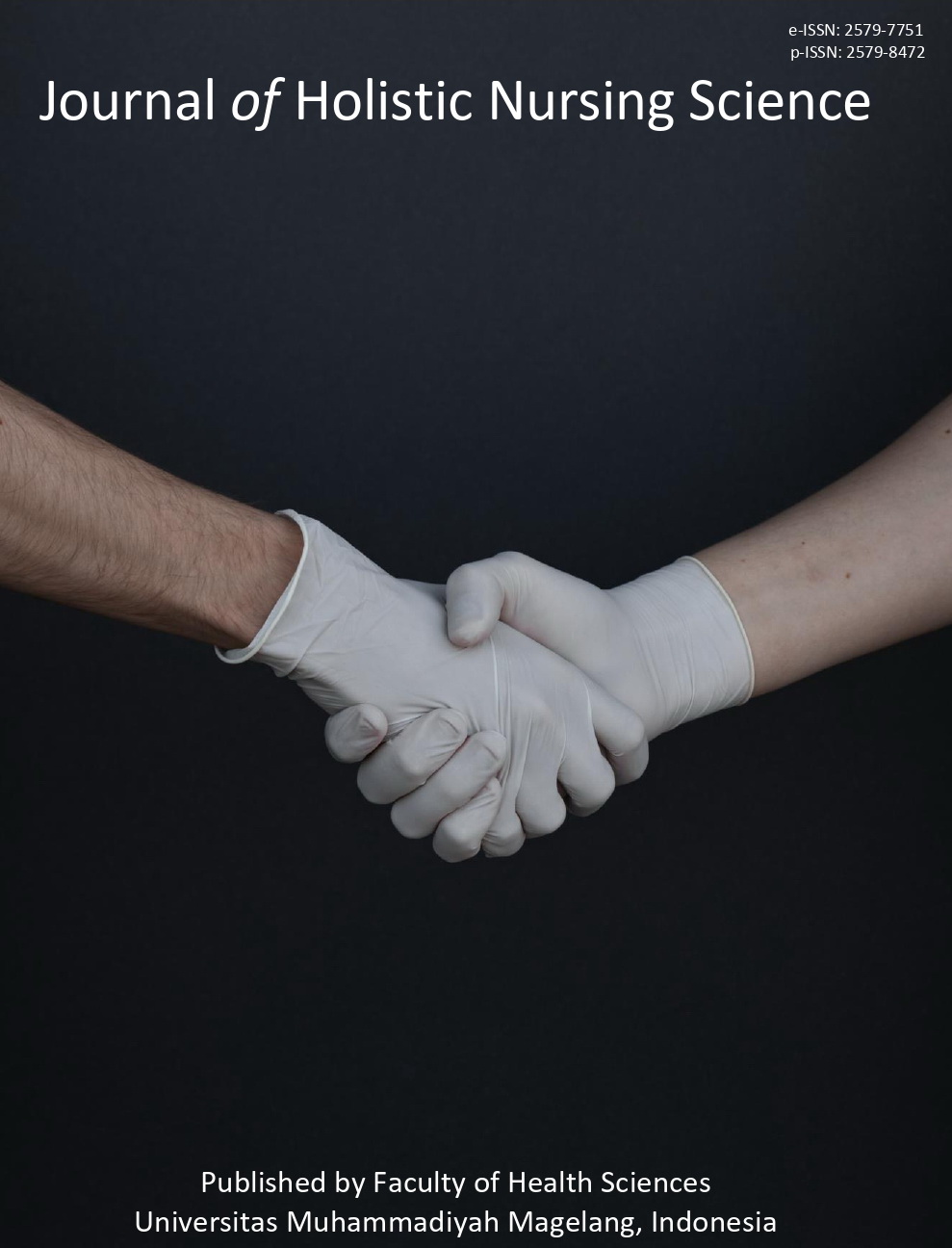EFEKTIFITAS PIJAT OKSITOSIN DAN SENAM NIFAS TERHADAP PROSES INVOLUSIO UTERI IBU POSTPARTUM SPONTAN DI RS PKU TEMANGGUNG
Main Article Content
Abstract
Background: The cause of maternal postpartum hemorrhage is atonic uterus or uterine subinvolusio. Uterine involution is the return of the uterus in a state of pre-pregnancy form and position.Oxytocin massage and parturition gymnastic are actions that can optimize the process uterine involution. Oxytocin massage is an act of massaging the spine from fifth to sixth costa until the scapula. Parturition gymnastics is a kind of gymnastic performed by postpartum mothers indepently. Objective: This study aimed to analyze the effectiveness of oxytocin massage and parturition gymnastics in accelerating the process of maternal postpartum spontaneous uterine involusion. Methods: This study used Quasi Experiment with post test only design with three comparison treatments. Total sample was 39 people, divided into three groups and each group of 13 people. The sampling technique used consecutive sampling. Selection of therapy using the division of the group. Oxytocin massage and parturition gymnastics performed two times, the first action performed 6 hours after birth and the second act was done after 4 hours. Measuring instrument used was the observation sheet uterine involusion. Results: This study showed that oxytocin massage, parturition gymnastics, oxytocin massage and parturition gymnastics, is an effective way to speed the process spontaneous uterine involusion postpartum mothers with p value of 0.000 (p <0.05).Conclusion: Oxytocin massage, parturition gymnastics, oxytocin massage and parturition gymnastics, effective to accelerate the process uterine involusion, however, doing both of oxytocin massage and parturition gymnastic was more effective. Suggestion: Both of these actions can be used as an alternative therapy to accelerate the process of spontaneous postpartum maternal uterine involusion.
Downloads
Article Details
Authors who publish their articles in JHNS retain full copyright of their work. JHNS does not require authors to transfer their copyright to the journal or Universitas Muhammadiyah Magelang as the publisher. The authors grant JHNS a license for the first publication.
